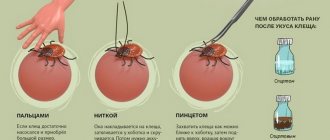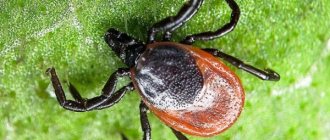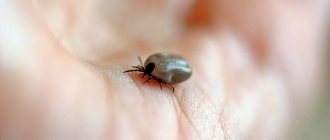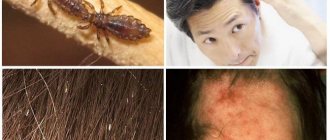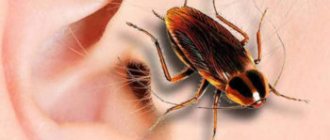Epidemiological situation in Izhevsk
According to Rospotrebnadzor, only every 100th resident of the republic is vaccinated against encephalitis in Udmurtia. And the active season for ticks begins in April. Every year in April-May, city services exterminate ticks in Izhevsk by treating the streets with pesticides against pests and blood-sucking parasites, for which about 330 thousand rubles are spent. The event is also held in parks and green recreation areas of the city.
On a note!
According to biologists, the epidemiological season of tick activity begins immediately after the snow melts, with the peak of their activity occurring in May and early June.
From May 1 to May 15, a hotline was activated in Udmurtia, designed to inform the population about behavior in a situation where a person has been bitten by a tick, where to go and how to get vaccinated, as well as work schedules and addresses of laboratories. In Izhevsk, the hotline number is: 8 (3412) 68-82-10, 68-36-54.
The benefits of ticks
One should not blame all ticks for their danger to humans and absolute uselessness in nature.
This is wrong. Oddly enough, ticks can be called “forest orderlies.” By feeding on rotting animal remains, insects fertilize and improve the soil. Scientists have told the whole world about the benefits of ticks. The fact is that the saliva of parasites contains substances that block inflammatory processes. Experiments were carried out on mice and rats. They were injected with tick proteins under the skin, after which inflammation in the rodents’ skin, joints and lungs decreased.
It is possible that in the future people will come to the pharmacy for the new medicine “Klesch - aspirin”. But for now, ticks are a real threat to life!
The most dangerous areas of Izhevsk
According to observations from past years, the most “dangerous” places, where the number of pests is maximum, is the park named after. Kirov, park named after. Gorky, Tatarbazar districts, agricultural storage facility, Votkinskoe highway, Lipovaya Roshcha, st. Rocket, village Varaksinova, the town of Metallurgists and city cemeteries. In such places, Izhevsk residents are most often attacked by “bloodsuckers.”
In the city of Izhevsk and the suburban area, the most contaminated areas are:
- horticultural areas (58%),
- forests (25%),
- city forest belts (8%);
- cemetery zones (1.7%);
- city parks and squares (1.2%).
Appearance of the ixodid tick
The most dangerous species of the arthropod family living in Izhevsk and the Udmurt Republic is ixodid ticks (lat. Ixodoidea). There are 650 species in the world, of which the most dangerous are:
- forest or taiga species;
- dog tick;
- pasture or meadow species.
Forest tick
Typically, the size of the female parasite is 3-4 mm and exceeds the length of the male by 2 times, and when filled with blood, it increases several times and looks like a gray pea with a diameter of up to 10 mm. They live on the branches of bushes, grass stems in forest areas, near paths, where they wait for their victims.
On a note!
Ticks do not rise above 1.5 m from the ground.
After wintering, which takes place in the forest floor, when the air temperature reaches +10°C, they emerge from hibernation and go in search of food, that is, human blood and warm-blooded animals. The period of their activity occurs in April-June, and then a new rise begins in September, when the larvae emerge from the eggs.
Ticks love moist and warm weather, especially long spring or rainy summer.
Professional measures to combat ticks
Measures to combat ticks by professional exterminators in Izhevsk have long been processed and therefore the work of a good disinfection service will help you get rid of these unpleasant arthropods for a long time, if not forever. They operate according to the following scheme: inspection of the site - preparation of the territory - treatment with special insecticidal agents - re-inspection of the territory to check the effectiveness of the work done. Most often, a cold or hot fog generator is used during processing, which have a high degree of efficiency. All these subtleties are related to the fact that for each species of this family an individual set of tick control measures is used. And professional equipment and specially developed chemical compositions help specialists treat the most inaccessible areas that ordinary summer residents and nature lovers simply cannot reach.
Diseases transmitted by tick bites
The danger of bites from blood-sucking parasites is that in their saliva they can carry pathogens of various infectious diseases:
- tick-borne encephalitis, in which the virus damages the central nervous system, which threatens the victim, in the absence of timely treatment, with paralysis of the limbs and other serious complications; after suffering from a disease, a person acquires immunity to it;
- borreliosis (Lyme disease) – transmitted by bacteria through the blood, causing inflammatory processes in the human body, negatively affecting the functioning of the cardiovascular system, joints and skin; in the absence of treatment, a transition to a chronic form, as well as death, is possible; a clear symptom of the disease is the appearance of a red spot (erythema) in the area of the bite; people who have had Lyme disease can become infected again after a 7-year break;
- monocytic ehrlichiosis - an infection caused by microorganisms of the genus Ehrlichia, affects the skin, liver, central nervous system and bone marrow, where infectious granulomas are formed;
- granulocytic anaplasmosis is an acute febrile disease, transmitted by the pathogen Anaplasma phagocytophillum, microorganisms affect neutrophils, which causes a decrease in the body’s immune defense response and provokes damage to other infections and diseases;
- some types of fevers (Astrakhan, Crimean, etc.) - manifested by the appearance of papules in the bitten area, rash, itching and severe chills, then other symptoms are possible: insomnia, headache, joint pain).
Diseases from Ticks
To identify the disease, it is necessary to check the tick for the presence of the virus and take a blood test for infection.
Chemical repellents for ticks
People widely use the method of home chemical treatment of plants, especially indoor plants, with preparations such as Actellik, Apollo, Corbofos and Fitoverm. But these drugs should be used only in advanced cases of infection of indoor plants. It is much better to give the plants a shower in the bathroom and ensure that they are in an area of high humidity, which many types of mites cannot tolerate. In order to be guaranteed to get rid of parasites in the garden, it is better to call specialists from Izhevsk, who will treat the entire area and the surrounding area with special chemicals that will destroy both ticks and their clutches.
Where to go if bitten by a tick in Izhevsk
If you find an attached parasite on your body, you must:
- remove the tick using a special device, tweezers or strong thread, trying to keep it alive;
- put in a container (preferably a glass jar with a piece of damp cotton wool, which will help prevent the parasite from drying out) and close with a lid;
- if you do not immediately take the tick for analysis, it is better to place the jar in the refrigerator;
- go to the clinic for medical help to prevent the disease;
- submit the tick to the laboratory for analysis.
List of laboratories in Izhevsk where you can submit a tick for analysis:
- FBUZ "Center for Hygiene and Epidemiology in the Udmurt Republic" 8.30-18.00, on weekends and holidays - 9.00-18.00. Izhevsk, st. Lenina, 106. Tel.. Conducts tests for the presence of viruses: encephalitis, borrelia, ehrlichia, WNV virus and anaplasma.
- Center for Hygiene and Epidemiology for the Urals, Izhevsk, st. Kirova, 46. Tel..
- Center for Hygiene and Epidemiology for Railway Transport, Izhevsk branch, Izhevsk, st. Druzhby, 6. Tel..
- Republican Vaccine Prevention Center Izhevsk, st. Petrova, 6. Tel. +7 (3412) 313-314. Acceptance of ticks for analysis is done for a fee and is carried out in the laboratory of hygiene and epidemiology.
- BUZ UR "Republican Clinical Infectious Diseases Hospital of the Ministry of Health of the Urals", emergency room. Works around the clock. Izhevsk, st. Truda, 17. Tel. 21-92-24
They accept ticks for analysis free of charge for WWII veterans, widows of WWII participants, heroes of labor (if they have an identification card). For others, the analysis is carried out for a fee:
- 90-140 rub. – it’s worth getting a tick
- 280-430 rub. – analysis for encephalitis;
- 430-485 – for borreliosis;
- 490-520 rub. – for ehrlichiosis and anaplasmosis
Is it possible to protect yourself from the virus?
Vaccination against tick-borne encephalitis
Infection with a dangerous virus can be prevented using methods:
- Specific prevention, which includes vaccination. Particularly preventive vaccination against tick-borne encephalitis is necessary for persons working in endemic foci or traveling to them (business travelers, construction brigade students, tourists, people going on vacation and lovers of gardening work).
- Seroprophylaxis is necessary for persons who have not been vaccinated and have come to a medical facility due to tick bites in areas where tick-borne viral encephalitis is endemic (it is carried out exclusively in health care facilities).
- Nonspecific prevention, which involves the use of properly selected equipment (special protective suits that prevent the penetration of parasites through the collar, sleeves or pants).
- An attack by bloodsuckers can also be prevented by using repellents that have a deterrent effect. They can be used to treat clothes and apply to exposed areas of the body (according to the instructions).
- While in a natural focus of tick-borne encephalitis during the season of parasite activity, it is necessary to periodically inspect your clothes and body for detected ticks.
Every person who has not been vaccinated and who finds a tick bite or a parasite bite on their body should know what to do, where to go if bitten by a tick and where to get tested after the bite.
But first you need to remove the attached parasite, following the following recommendations:
- Grasp the tick with tweezers as close to the victim's skin as possible. Remove the parasite by making several rotational movements around the axis, avoiding tearing the pest’s body. You can use a special device.
- Treat the bite site with any disinfectant (alcohol, cologne or iodine).
- If an element of the pest (its head or proboscis) remains in the wound, it is necessary to treat the damaged area with 5% iodine and leave until natural elimination.
- At the end of the procedure, you must wash your hands thoroughly with soap.
- Donate blood for borreliosis (Lyme disease), test for encephalitis and other tick-borne infections.
- Submit the tick for analysis.
If you cannot remove the tick yourself, it is better to go to the nearest emergency room or clinic.
Blood tests
In addition to the results of a tick test for viruses, experts advise (even if the result is negative) to donate blood from the cubital vein, which will help more accurately diagnose the presence of the disease. The analysis determines the presence of antibodies of 2 classes (IgM and IgG) in the body of a bitten person. Immunoglobulins M are always the first to react, which can indicate a recent infection.
Blood test
Immunoassay is carried out in several stages:
- 10 days after the bite – for encephalitis and borreliosis for PCR testing;
- after 14 days – for immunoglobulins M for encephalitis;
- after 2 weeks - analysis for IgM and IgG antibodies to borreliosis;
- in 3 months – analysis when the peak concentration of antibodies to borreliosis occurs.
All tests after a tick bite are carried out in the above-mentioned laboratory of the Center for Hygiene and Epidemiology of the Urals.
Tests for tick-borne encephalitis
To obtain reliable results, it is necessary to conduct a timely examination of the patient - when the first signs are detected. It is advisable to donate blood for analysis at the end of the incubation period of the virus (approximately 1.5-2 weeks after contact with the arthropod).
Analysis methods
If you have already decided when to donate blood after tick bites, it is also important to find out which technologies are most effective. The best options for diagnosing encephalitis are immunoassays.
Immunoassay
You can test for encephalitis without a tick by implementing a method used to determine the concentration of substances that are contained in minimal volumes. It is based on the principle of binding of antigen and antibody. Among several varieties, an enzyme-linked immunosorbent test is distinguished; if a tick has bitten, antibodies of the following classes are detected in the blood: IgM, IgG. The first of them are indicative, since they appear faster (a few days after the first signs are detected). IgG will remain in the blood for a long time.
Antibody test
PCR study of ticks
Full name: polymerase chain reaction. An analysis for tick-borne encephalitis is performed in the first hours after removing the pest. It is also permissible to examine parts of the tick's body (when it was not possible to keep it alive). The method is based on the technique of detecting the DNA of the encephalitis virus in the parasite.
After successful removal of the parasite, you need to submit it for analysis
When is it necessary to get tested for encephalitis?
This should be done no earlier than the incubation period ends. Then and over the next 6 months, antibodies will be detected in the blood. You can take tests during the specified period. However, this is usually done after 2 weeks, as symptoms of the disease appear later. In this case, tests for a tick bite are an auxiliary diagnostic measure, since the clinical picture is already quite clear.
The test must be taken before the end of the incubation period
Preparing for analysis
For children and adults, there is a single rule: the test is taken on an empty stomach, so it is not recommended to eat for 4 hours before the test.
Carrying out. Blood collection. How does the procedure work?
When it is necessary to take tests, the duration of their completion is specified. Thus, there is a difference in the timing of laboratory tests. The results of tests for tick bites for IgM antibodies are obtained within 4 days (counting from the moment the biomaterial is collected). The test for IgG antibodies takes longer - about 6 days. For this purpose, venous blood is collected.
Blood donation
Decoding the results. Results of two types: quantitative and qualitative
IgM antibodies are qualitative in nature, this is due to the fact that they are formed during infection and appear almost immediately after the first symptoms appear (end of the incubation period), so only their presence is important: in the conclusion they write “detected” or “not detected”; IgG antibodies are quantitative in nature, since they are present in the blood for a long time and can remain even after vaccination, so a certain amount of such immunoglobulins (titers 1:100 and above) is informative.
Vaccination against encephalitis
In order to completely protect people from the risk of contracting such serious diseases as encephalitis and others, it is necessary to get vaccinated against tick-borne encephalitis on time. Doctors recommend carrying it out in the fall so that the human body can develop the necessary antibodies to the virus within six months.
On a note!
Vaccination against encephalitis is carried out in 3 stages with 3 doses with an interval of 21 days, the latest date for starting injections is February. With proper vaccination, the guarantee of protection against the encephalitis virus is 91-97%.
If you come in with a tick bite in the spring, then it is necessary to undergo emergency prevention. It is done using an injection of immunoglobulin in the first 3 days immediately after the bite. Experts recommend that if you find a tick on your body, carefully remove it, place it in a glass container and bring it to the laboratory for examination.
It is known that in addition to encephalitis, blood-sucking insects are capable of transmitting other severe infectious diseases (borreliosis, anaplasmosis, etc.).
Vaccination against encephalitis is carried out at the Republican Vaccine Prevention Center. St. Petrova, 8. Tel. +8 (3412) 313-314.
Vaccine prices:
| Vaccine name | Cost, rub. |
| Encevir, sorbed liquid, produced in Russia | 670 |
| Klesch-E-Vac (Russia) | 670 |
| Dry vaccine (Russia) | 680 |
| FSME-Immun Inject for adults (Austria) | 1400 |
| FSME-Immun-Junior for children (Austria) | 1100 |
| Encepur (Germany) for adults | 1400 |
Vaccines against encephalitis
How can you remove a tick yourself?
It is best to remove ticks with a special device that is sold in pharmacies. This could be a “lasso pen”, UNICLIN TICK TWISTER, etc. If there is no pharmacy nearby, you can use ordinary cosmetic tweezers or sewing thread.
The removal procedure itself must be carried out as follows:
- Grab the arthropod with tweezers or a special device as close to the proboscis as possible (this is the part of the animal’s body that is in the skin). If a thread is used, a loop should be made from it, which must be carefully tightened over the head of the tick embedded in the skin.
- Smoothly pull up. In this case, you should not apply great force, as this may simply cause the tick to burst, and all its contents will end up on the skin and into the wound. In addition, with a sharp jerk, the arthropod’s proboscis remains in the wound, which can cause inflammation and even suppuration.
- After removing the tick, wash the skin with soapy water and treat it with any product containing alcohol. There is no need to apply a bandage. If the head of an arthropod remains in the skin, you should try to remove it from the body with a sterile needle like a splinter.
After removing the tick, it is advisable to do the following:
- Mark on the calendar the date when everything happened.
- Call your general practitioner or family doctor, explain the situation and ask about the need and timing of blood tests and taking some preventive measures (in some cases, to prevent the development of tick-borne encephalitis, victims of tick bites are given immunoglobulins, antiviral drugs are prescribed, etc.) .
- Take the tick to the laboratory. Information about laboratories can be found on the website of Rospotrebnadzor in your region.
It is necessary to visit a doctor in the following cases:
If there are signs of inflammation in the bite area (swelling, redness, etc.). If, between 3 and 30 days after the bite, red spots appear on the skin. If your body temperature rises, muscle pain, unmotivated weakness and other unpleasant symptoms appear (these signs are especially important to monitor during the first 2 months after the bite).
